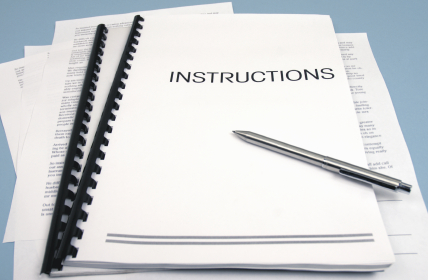#1: Best Of The Mr. Media Training Blog 2013
This post, “How To Get People To Do What You Want” was published on September 12, 2013. It was my personal favorite of the year. If you missed it the first time, I hope you enjoy it!
What’s the best way to get people—an audience, your staff, a teenager—to do what you want them to do?
If you’re like a lot of companies, leaders, or parents, you create a set of rules and policies. Do not give customers a free upgrade without supervisor approval. Get your reports in by the 15th of each month. Don’t stay out past midnight.
But those of us who have issued sets of rules know that lack of compliance is a big problem. Many people don’t like rules, so they ignore them. They lapse back into old habits. Staff members wait until the end of the month to submit their reports. Your teenager stays out until 2 a.m.
In many cases, there’s a better way to get people to do what you want them to do.
In her book The Story Factor, author Annette Simmons makes a persuasive case that stories are the best vehicle to influence other people:
“Most of the time, you won’t be present when the people you want to influence make the decisions…so how do you get them to do what you want? Story is like mental software that you supply so your listener can run it again later using new input specific to the situation…Once installed, a good story replays itself and continues to process new experiences toward the perceptions and choices you desire.”
Nordstrom, for example, doesn’t tell employees that “customer service is our top priority.” They tell new employees a story about a customer who claimed he had purchased tire chains at Nordstrom and wanted a refund (Nordstrom doesn’t sell auto parts). The salesperson gave him a refund anyway. That story is a terrific piece of mental software that salespersons can use when faced with similar customer service dilemmas.
In their book Made to Stick (highly recommended), authors Chip and Dan Heath tell a story about Southwest Airlines, which wanted to be known as “THE low-fare airline.”
“Here’s an example,” [Southwest Airlines CEO Herb Kelleher] said. “Tracy from marketing comes into your office. She says her surveys indicate that the passengers might enjoy a light entrée on the Houston to Las Vegas flight…she thinks a nice chicken Caesar salad would be popular. What do you say?…You say, ‘Tracy, will adding that chicken Caesar salad make us THE low-fare airline?…Because if it doesn’t help us become the unchallenged low-fare airline, we’re not serving any damn chicken salad.”
Those stories about tire chains and chicken salads stick. As Ms. Simmons wrote, they serve as mental software that does a far superior job of getting people to act in accordance with your wishes—even when you’re not around—than most policy memos ever could.
So the next time you’re in a position to tell someone “the rules,” try framing your instructions within the context of an evocative story. Long after your policies would have been forgotten, you might find that your story remains firmly etched in their mind.
Photo credit: Dylan Ashe, Wikimedia Commons




